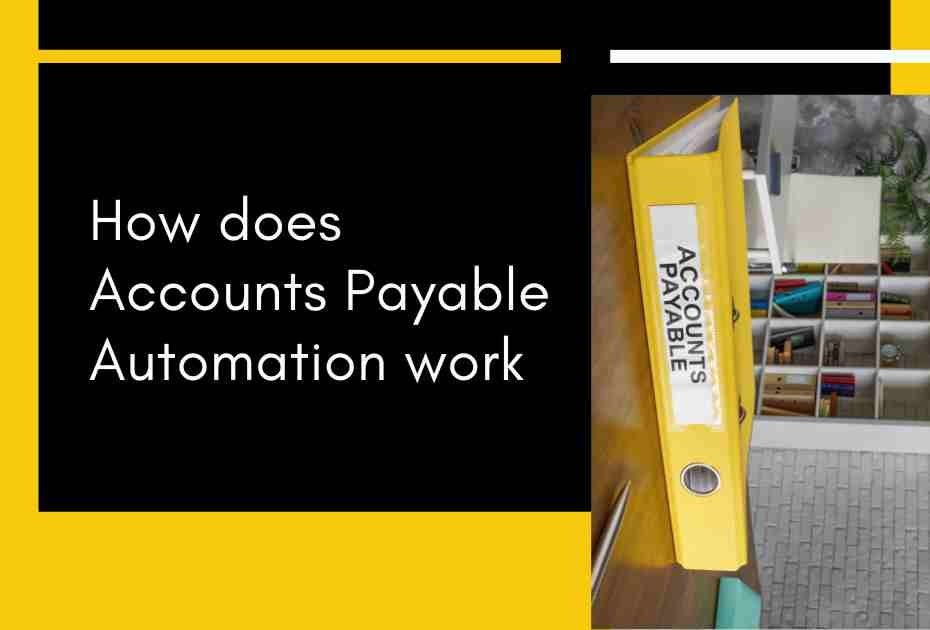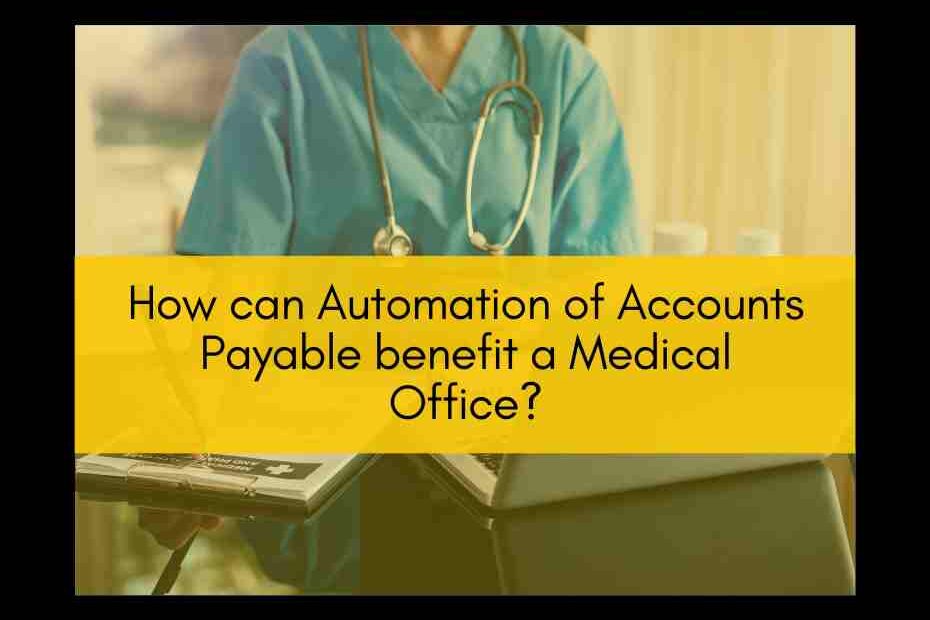Accounts Payable (AP) automation technology streamlines routine tasks like receiving invoices, coding, routing for approval, making payments, and reconciling accounts. It includes “touchless” processing, which means less manual data entry and more automated handling of invoices and approvals with just a click. Here we’ll read about how can automation of accounts payable benefit a medical office.
AP automation software also offers dashboards and analytics to manage the process efficiently and identify any issues quickly. By digitising all AP data in one system, it becomes easier to search and audit financial information, enhancing transparency and compliance.
Accordingly at SAS KPO Services, AP automation tools eliminate manual tasks in accounts payable by using dedicated software. They enable digital submission and approval of invoices and purchase orders, reducing reliance on physical paperwork and manual data entry. So, this automation aims to improve speed, accuracy, and scalability for businesses, providing better visibility and control over financial operations.
How does Accounts Payable Automation work

AP automation software simplifies how your suppliers’ invoices are managed by converting them into a digital format and guiding them through a streamlined digital workflow that ends with paying suppliers.
Accordingly to start, AP automation uses Optical Character Recognition (OCR) to extract information from invoices. Some solutions employ machine learning to improve accuracy over time, suggesting general ledger codes or approval routes based on past data. By customising rules specific to your business, like allowable discrepancies or approval chains, you can reduce the need for manual intervention in processing most invoices.
Here’s how AP automation works step by step:
- Invoice Capture with OCR and E-Invoicing: Initially, AP automation digitises incoming invoices. Paper bills are scanned by OCR technology, which turns them into digital data. Simultaneously, e-invoicing systems enable vendors to submit invoices electronically, bypassing paper transactions.
- Matching and Verification: After capturing invoice data, the system automatically compares invoices with corresponding purchase orders and delivery receipts. This ensures that invoiced items and purchase terms align correctly. Thus, automation helps detect discrepancies, ensuring only accurate invoices proceed.
- Approval Workflow: Invoices are routed based on preset rules. This could involve amounts, vendors, or other criteria. Alerts and reminders expedite approvals, ensuring timely reviews and maintaining an audit trail.
- Payment Execution: Approved invoices move to the payment stage, where the system schedules payments, selects payment methods, and executes them automatically or with minimal human input. So, automating payments ensure timely settlements and allows businesses to benefit from early payment discounts.
- Reconciliation and Reporting: Post-payment, automated reconciliation matches payment transactions with bank statements to verify accuracy. Moreover, comprehensive data on spending trends, vendor performance, and possible cost reductions are produced via AP automation. This data-driven approach eliminates manual checks, reduces errors, and informs strategic financial decisions.
AP automation streamlines the entire invoice-to-payment cycle, offering efficiency, integration, and systematic management of financial processes.
What are the benefits of AP Automation

The healthcare industry is shifting from volume-based care to value-based care, which requires all departments to become more efficient and cut costs. One crucial area for improvement is the Accounts Payable (AP) department. Implementing healthcare AP automation can significantly reduce expenses and improve efficiency. Here are seven key benefits of AP automation for healthcare organisations:
- Cost Reduction- AP automation helps healthcare organisations save money by processing invoices electronically, reducing the need for paper. This lowers AP processing costs and bank fees, and avoids costs associated with human errors. Overall, AP automation can cut costs by up to 50%.
- Better Decision Making- AP automation tools like iPayables provide healthcare decision-makers with valuable data for forecasting and decision-making. In fact they offer high visibility into the payment process, helping to identify problems and areas for improvement. Transparency and easier auditing are additional benefits.
- Increased Efficiency- Manual invoice processing is time-consuming and inefficient, often leading to lost invoices, errors, and unauthorised access. Lastly, AP automation solves these issues, streamlining operations and increasing employee productivity by freeing up time for higher-value tasks.
- Error Elimination- AP automation minimises errors that can occur with manual processing, such as mistakes in billing codes or values, which can lead to significant financial losses.
- Faster Approvals and Payments- With AP automation, the approval and payment process is more controlled and faster. This allows healthcare organisations to take advantage of early payment discounts and avoid late fees, fostering better relationships with suppliers and reducing overpayments and duplicate payments.
- Regulatory Compliance- AP automation ensures compliance with regulations like SOX and FASB and adheres to organisational policies, such as requiring multiple authorisations for payments. This helps avoid costs associated with non-compliance and enhances data security.
- Supplier Benefits- Suppliers also benefit from AP automation, gaining better visibility into contracts, improving financial forecasts, and optimising payments. This reduces their burden of manual processes and allows them to focus on more productive tasks.
In other words manual invoice processing is inefficient, prone to errors, and costly. Adopting AP automation solutions like iPayables in healthcare can reduce costs, improve efficiency, minimise mistakes, and ensure compliance. So, this enables healthcare organisations to allocate more resources toward improving patient care.
What makes Accounts Payable so challenging

Accounts Payable (AP) is often seen as a cost-heavy department because it involves paying bills and entering payment data, tasks that no one enjoys doing. Despite this, it is a critical part of running a business.
The challenge with optimising AP comes from its dual nature. On one hand, it involves data transformation tasks like extracting data, coding invoices, and synchronising with ERP systems, which can be automated with current technology. On the other hand, it requires human intervention for reviews, approvals, and financial controls.
Additionally, it is important to understand the difference between accounts payable and notes payable.
This blend of automated data tasks and necessary human involvement makes AP a complex process to optimise.
Challenges with Accounts Payable

Let us look at the common problems faced by the accounts payable (AP) team, especially in large departments managing huge volumes. Some issues arise from poorly defined processes, others from human error, and some from technical failures. Regardless of the cause, these problems negatively impact the AP department and the business.
- Slow Processing- If the AP team relies on manual processing, invoices are passed around multiple times before approval. This slows down the process, increases the risk of errors, and can result in lost documents. Consequently, payments are delayed, vendors become frustrated, and they frequently inquire about payment status, leading to strained relationships.
The average on-time payment rate, as per the IOFM Efficiency Benchmarks report, is:- 24% for companies with low invoice volumes.
- 25% for companies with moderate invoice volumes.
- Matching Errors- Matching purchase orders, invoices, and receipt reports is crucial to ensure the company pays for what it receives. This three-way matching can be troublesome when done manually. Discrepancies require manual investigations, which are time-consuming and often challenging for employees to manage promptly.
- Invoice Exceptions- Suppliers sometimes send incorrect or incomplete invoices. When this happens, the AP team must manually follow up with the supplier to fix the issue. This manual intervention takes time and slows down the department.
- Unauthorised Purchases- Employees sometimes bypass the usual purchasing process to avoid a slow AP department, leading to unauthorised purchases. Processing these exceptions takes extra time and delays other invoices.
- High Invoice Volumes- Large volumes of invoices can overwhelm AP teams, as well as causing delays in processing and payment. This impacts cash flow and creates cash management challenges.
- Fraud Risks- Fraud, both internal and external, is a significant concern for AP teams. During the Covid-19 pandemic, B2B payment fraud increased by 10%. Fraud can come from email scams, impersonation, login breaches, or even dishonest AP employees making unauthorised purchases. Detecting fraud is challenging and can harm the company’s finances.
- Compliance Risks- AP teams must ensure compliance with various regulations, which are complex and time-consuming. Compliance requirements can delay invoice processing and payment, adding to the risks.
- Payment Errors- Errors like double payments, misplaced invoices, or paying suppliers before receiving goods can cause significant problems. Double payments can occur due to typos or marking an invoice as paid incorrectly. Misplaced invoices complicate records and result in late fees. Paying before receiving goods can lead to issues if the shipment is damaged or incomplete.
- Reconciliations and Audit-Readiness- Reconciling accounting records in the ERP system with other financial data is a significant task that the AP team usually dreads. Discrepancies and missing invoices add to the difficulty, making the process even more burdensome.
By understanding and addressing these common problems, AP departments can improve efficiency, reduce errors, and enhance vendor relationships.
Indications That Your Accounts Payable Procedure Needs Automation

1. You’re Considering Hiring New Staff- If you are expanding into new markets, seeing a surge in demand, or dealing with more regulatory requirements, you might think about hiring new A/P staff. But before doing that, consider automating your accounts payable process. Automation can manage more tasks without increasing labor costs and allows your existing team to focus on more important activities like cash flow management and supplier relationships. If your business has seasonal spikes, automation can manage the extra workload more efficiently than temporary hires.
2. Your Accounts Payable Process Is Too Slow- Occasional late payments happen, but if you are consistently missing deadlines, it is + a clear sign that your accounts payable process needs an upgrade. Manual processes involve multiple steps and approvals, each introducing delays, especially if someone is unavailable. These delays can cause you to miss early payment discounts, increasing your costs. Automation keeps everything moving smoothly and reduces the need for human oversight.
3. You’re Spending Too Much Time Fixing Errors- Humans make mistakes – we mistype numbers, make calculation errors, or send duplicate invoices. These errors waste time and resources and can strain business relationships. Automating your accounts payable process minimises human error and speeds up invoice approvals.
4. You’re Frequently Communicating with Suppliers- Frequent check-ins from suppliers often indicate concerns about payment reliability. While initiative-taking communication from suppliers can be good, it usually means they are worried about late payments or errors. Automation reduces these issues, helping maintain trust and smooth operations.
5. Your Payment Processing Costs Are High- If the cost to process invoices is rising, it is a sign that your accounts payable process is inefficient. So, this problem often ties back to slow processes and frequent errors. Moreover, tracking processing costs helps highlight the need for change, making it easier to justify automation to management.
6. Your Cash Flow Management Needs Improvement- Effective accounts payable processes are crucial for monitoring and controlling cash flow. If routine tasks are taking up too much of your time and energy, cash flow management can suffer. Automation frees up your staff to focus on strategic tasks, as well as ensuring better financial health for your company.
However, automating your accounts payable process can help you manage increased workloads, reduce errors, improve efficiency, and maintain better relationships with suppliers. It is a smart move for improving overall financial operations.
Key Features to include in your AP Automation solution

1. Aggregating Invoices from Multiple Channels- AP teams can automate the collection of invoices from various sources like email, fax, scan, EDI, supplier portals, and more. This means suppliers can send invoices in any format, such as hardcopies, PDFs, or DOC files. So, automation makes it easy to import and process these invoices in bulk, saving time and effort.
2. Centralised Interface- A single, user-friendly interface consolidates all invoices and related documents in one place. This improves visibility and coordination, especially for remote teams. It enhances collaboration, productivity, and reduces costs by providing near-real-time information and secure, limited access to authorised users.
3. Supplier Collaboration Portal- A centralised portal allows suppliers to manage their invoices, view purchase orders, chat, exchange documents, and check payment statuses. This reduces the need for follow-ups and ensures smooth communication, improving vendor relationships and making AP operations more efficient.
4. Custom Business Rules Management- AP departments can set and manage custom business rules without coding. So, these rules can control various aspects like payments, returns, and invoice discrepancies. Automated routing ensures invoices go to the right person, streamlining approvals and reducing manual follow-ups.
5. Fraud Prevention- Automation helps prevent fraud by using robust rules and algorithms. It ensures accurate invoice validation through 2-way and 3-way matching processes, protecting against overbilling, double billing, and fake invoices.
6. Gate Entry and GR Automation- Automating Gate Entry and Goods Receipt (GR) processes within the same system saves time and money. It captures details like vehicle and driver information at the plant gate and creates GR notes automatically when materials are received, reducing manual effort.
7. Touchless Invoice Processing- High-touch, manual invoice processing is error-prone and time-consuming. Automation uses AI, ML, and OCR to process invoices with high accuracy, reducing manual intervention and speeding up payments. This allows AP teams to focus on more valuable tasks.
8. Audit and Compliance- Every interaction with an invoice is timestamped, creating a permanent log and audit trail. This makes it easy to retrieve any invoice for audits and ensures compliance. Digital records are secure, easily accessible, and reduce the need for physical storage.
9. Advanced Analytics- Advanced analytics provide real-time insights into the AP process, helping to identify and address bottlenecks quickly. Graphical dashboards make it easy to visualise key metrics, even for non-technical users.
10. Drilled-down Reporting- AP teams can quickly generate detailed reports on various aspects like process performance and aging. This self-service capability allows for easy review and decision-making, helping to scale and improve AP operations.
In the end, automating your accounts payable process can streamline invoice collection, improve collaboration, enhance fraud prevention, and provide valuable insights through advanced analytics and reporting. This leads to greater efficiency, reduced costs, and better vendor relationships.
Implementing an AP Automation solution

1. Review Your Current AP System- Take a close look at how you currently manage accounts payable. Identify any issues you encounter with processing invoices and making payments. Also, consider the costs involved with manual methods.
2. Build a Business Case- Set clear goals for what you want to achieve with AP automation. Think about the tangible benefits, like cost savings and efficiency. Present realistic timelines for implementing the new system.
3. Get Stakeholder Buy-In- Make sure to involve all relevant stakeholders in the decision-making process. Their support is crucial for successful implementation.
4. Define Your Requirements- Determine the specific technology needs for your AP automation. Identify what features and capabilities are necessary to meet your goals.
5. Choose an AP Automation Provider- Accordingly research and select a software provider that best fits your needs. Consider the software’s features, compatibility, and support services.
6. Create an Implementation Plan- Work with your chosen provider to agree on a scope of work. Also create a thorough plan that outlines each stage of the implementation procedure.
7. Test and Train- Before fully rolling out the new system, test it thoroughly to ensure it works correctly. lastly train your employees in how to use the new software effectively.
8. Monitor Performance- Establish measurable metrics to track the success of the new AP automation system. Regularly monitor performance to ensure it meets your goals and makes necessary adjustments.
By following these steps, you can successfully transition to an automated accounts payable system, leading to improved efficiency, reduced costs, and smoother operations.
Conclusion
Hence, implementing an automation of accounts payable (AP) system could benefit & revolutionise the way your medical office manages its finances. By reducing manual tasks, eliminating errors, speeding up invoice approvals, and enhancing compliance, AP automation offers numerous benefits. It not only saves time and money but also improves overall efficiency and strengthens vendor relationships.
At SAS KPO Services, we specialise in helping healthcare organisations transition to automated AP systems. So, our tailored solutions ensure smooth implementation and provide ongoing support to maximise your investment.
Ready to transform your accounts payable process? Contact us today to learn more about how we can help your medical office achieve greater efficiency and cost savings.
Shivani Soni (HR and Digital Marketing Specialist, Top Marketing voice) writes this blog

